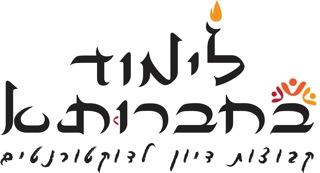תיאור הקבוצה
השפה הארמית הייתה לשון בינלאומית במזרח התיכון במשך יותר מאלף שנה. בניגוד ללשנות בינלאומיות אחרות, מעמדה לא נבע מהיותה השפה של התרבות השלטת; היא לא הייתה שייכת ללאום אחד או לתרבות אחת, ואין לה דיאלקט קלאסי או קאנון ספרותי. לכל עם ולכל תרבות במרחב הארמי היו הניב שלהם והספרות שלהם. אך הדמיון בין הדיאלקטים אפשר דיפוזיה של אגדות, היסטוריה, מדע ודת בין הקבוצות השונות של המזרח התיכון. מעמדה המיוחד של הארמית גרם לכך שבמחקר האקדמי היא איננה עומדת בפני עצמה – אין אוניברסיטה בעולם שיש בה חוג לשפה וספרות ארמית. הניבים השונים נלמדים ונחקרים בחוגים מגוונים, לרוב כנספח ללימודי המזרח הקרוב הקדום, הבלשנות השמית, מדעי היהדות, הנצרות, והאסלאם.
קבוצת החברותא "הארמית כשפה בינלאומית וכגשר תרבותי" שמה לה למטרה לשקף את רוחב היריעה של הארמית באמצעות גישור בין תלמידי מחקר מתחומים מגוונים, שהמשותף להם הוא העניין בארמית לסוגיה. הקבוצה תלמד יחדיו טקסטים מן הניבים השונים של הארמית המדגימים את תפקודה של לשון זו כגשר בין תרבויות, וכן תדון בהם מתוך גישה אינטר־דיסציפלינרית, כאשר כל משתתף יתרום מתחומו וילמד מעמיתיו. הקריאה המשותפת תאפשר תרגול של ניבים וקורפוסים שהם מחוץ לתחום הבית של כל משתתף, ותיצור קשרים עם חוקרים צעירים מתחומים סמוכים. מעמדה המיוחד של הארמית כלשון אינטר־נציונלית ואינטר־דיסציפלינרית תאפשר הפריה הדדית ובתקווה גם שיתופי פעולה עתידיים בין המשתתפים. אֵיתוֹ בְּחֶדְוָא!
למידע נוסף, אנא צרו קשר:
איתי קגן, החוג ללימודי מקרא
Aramaic as an International Language and as a Cultural Bridge
Aramaic was the international language of the Middle East for more than a millennium. Contra to other international languages, this position did not stem from it being the mother-tongue of the dominant culture; it did not belong to any one nation or culture, and it did not have a classic dialect or a literary canon. Each nation and each culture in the Aramaic sphere had its own dialect and literature. But the similarity between dialects facilitated the diffusion of lore, history, science, and religion between the different groups of the Middle East. This unique position of Aramaic resulted in the fact that in modern academia, it does not stand in its own right—there is no university in the world with a Department of Aramaic Language and Literature. The different dialects are learned and researched in diverse disciplines, mostly appended to Semitic linguistics and Ancient Near East, Jewish, Christian, and Islamic studies.
The study group, "Aramaic as an International Language and as a Cultural Bridge," is aimed at mirroring the wide breadth of Aramaic by bridging between research students from diverse fields who share an interest in Aramaic in its many forms. The group will join to study texts from different Aramaic dialects that demonstrate its function as a cultural bridge and discuss them from an interdisciplinary perspective. All participants will contribute from their field and learn from those of their peers. The joint reading will enhance proficiency in dialects and corpora outside of each participant's comfort zone and link early-career scholars from adjacent fields. Aramaic's unique position as both an international and an interdisciplinary language will enable mutual academic growth and hopefully lead to future collaborations between the participants. ˀêtô běḥedwâ!
For more information, please contact:
Itai Kagan, Bible Department

